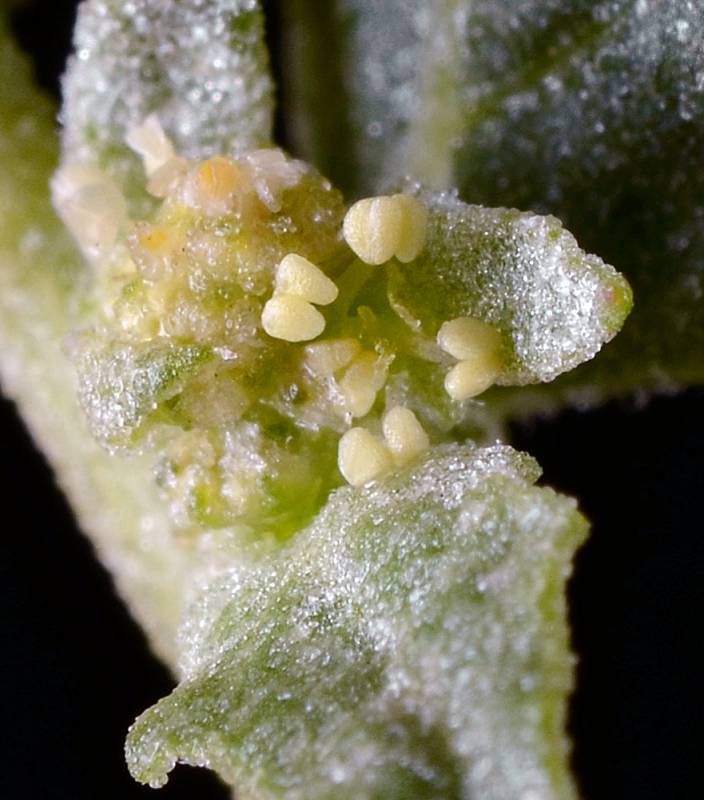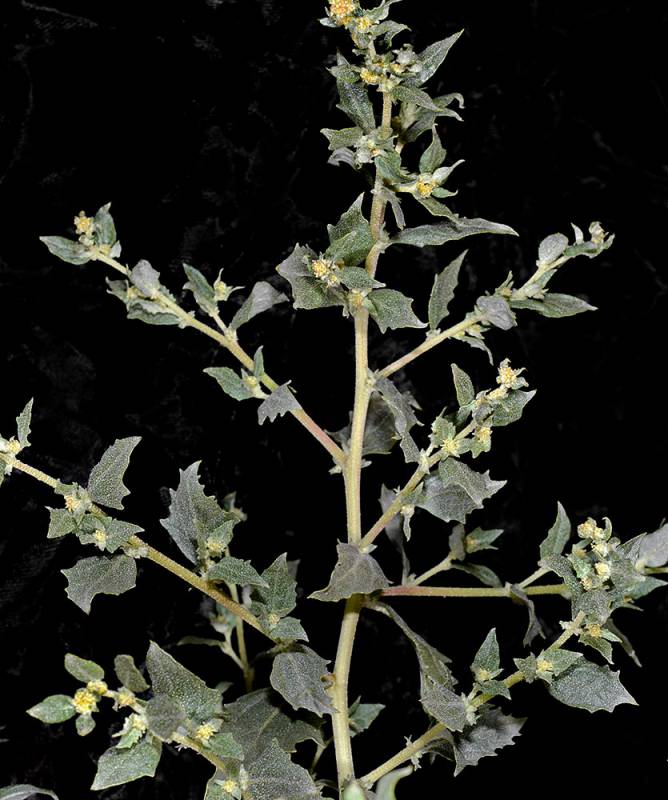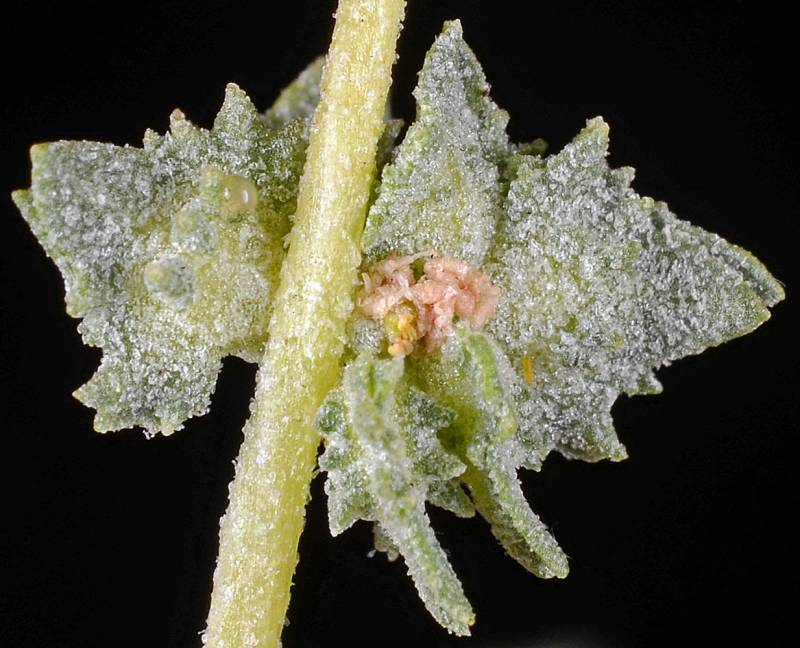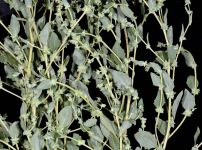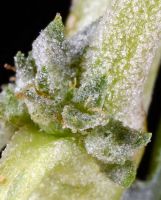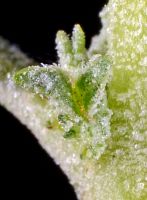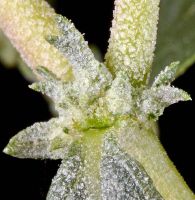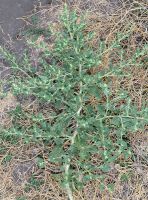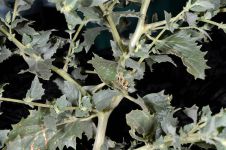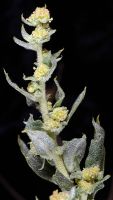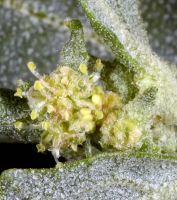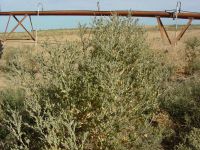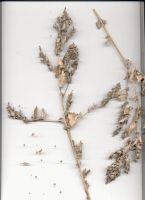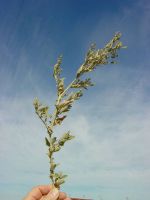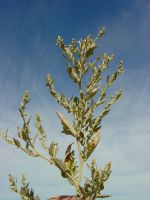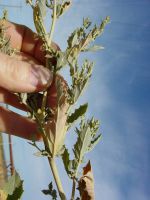Distribution: Occurring east of the Cascades crest in Washington; British Columbia to California, east to the Rocky Mountains and Great Plains; also in scattered locations in central and eastern U.S.
Habitat: Weedy species of irrigated land and roadsides.
Flowers: July-September
Origin: Introduced from Eurasia
Growth Duration: Annual
Conservation Status: Not of concern
Pollination: Wind
Monoecious, erect, freely-branched to simple annual, 2-12 dm. tall, grayish with a mealy coating at least on the lower surface of the leaves.
Leaves alternate, petiolate or the upper sessile, lanceolate to ovate, 2-5 cm. long, the blades wavy-dentate and often slightly hastate, tapered or rounded at the base.
Flowers glomerate in the leaf axils and on short axillary and terminal spikes, the staminate above the pistillate; staminate flowers with a 5-parted perianth; pistillate flowers without a perianth, with 2 subtending bracts which are fused less than half their length, triangular or nearly orbicular, strongly flattened, 4-8 mm. long, acute at the tip, the margins dentate, the sides with sharp projections.
Utricle
Publication: Sp. Pl., ed. 2. 2: 1493. 1763.
PNW Herbaria: Specimen records of Atriplex rosea in the Consortium of Pacific Northwest Herbaria database
WA Flora Checklist: Atriplex rosea checklist entry
OregonFlora: Atriplex rosea information
E-Flora BC: Atriplex rosea atlas page
CalPhotos: Atriplex rosea photos

